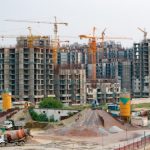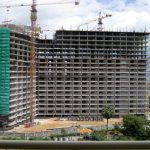
The government of India has set up a $ 3.5 billion fund to complete stuck housing projects. The fund will ensure the completion of 16 projects or more than 4000 homes in the financial year starting from 1st April. The announcement of this special fund ‘Special Window for Completion of Construction of Affordable and Mid-Income Housing Projects’ (SWAMIH) was made in November 2019.
It was the time when India had estimated $63 billion of stalled projects as economic slowdown and credit crisis lashed the sector. Builders were not able to service their loans which forced the banks to write off the debts which deteriorated what was already one of the world’s biggest bad-loan piles. It was in this scenario that the Central Government created the fund to unclog the financing pipes. Read on to find more about the ‘Special Window for Completion of Construction of Affordable and Mid-Income Housing Projects’ (SWAMIH) fund.
How and Where Does the Fund Operate?
Before the fund was set up a market study was carried out which revealed that almost 40% of the affected projects were in the National Capital Region (NCR), up to 25% in Mumbai Metropolitan Region (MMR) while the top seven cities accounted for around 85% of the stalled projects. However, Special Window for Completion of Construction of Affordable and Mid-Income Housing Projects’ (SWAMIH) is a pan-India fund and ensures democratic access to developers around the country wherever Real Estate Regulation and Development Act is applicable.
Who are the Investors?
There are a total of 14 investors. The government has 50% in the fund. Life Insurance Corp. and State Bank of India each have 10% while the rest are public and private sector players.
The Amount of Money Disbursed
The approval of around 159 projects that involved an investment of around 145 billion rupees was given that would complete around 1 lac homes. Around 47 projects (50 billion rupees) have received final approval. However, 112 are in the early stages of approvals where due diligence is pending. The disbursal amount is however not disclosed as funding is provided only against project progress. It would be interesting to note that two projects will near completion by April.
Types of Returns Expected
The Central Government takes the first charge on assets and cash flows. So, once the project is completed they are the first ones to get their money back. Existing lenders can only take a second charge. The investment is via zero-coupon non-convertible debentures. All the investments are carried out at a standard 12% internal rate of return across projects.
Roadblocks If Any
There was stiff resistance from lenders about the government’s first charge on repayment. However, as the track record of the deal indicates the hurdle is gradually being scaled. The government now shares security with the lenders as well as allows the sharing of cash flow to some extent. There is an active discussion amongst concerned government departments regarding which criteria to be relaxed.
Challenges that came Across
In many cases, the fund has to contend with bottom rung companies with lost manpower and a few without even their finance team so due diligence is difficult. No objection certificate from existing lenders has been furnished only by a few existing lenders. There are also some pending court cases where the home buyers are demanding compensation.
No one can deny that this is a very welcome move by the government who provides relief to developers who need funding for the completion of stalled projects so that finished homes can be delivered to the home buyers.
Click here if you are interested in purchasing new property from the prominent builders of the country.





